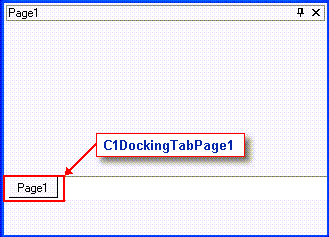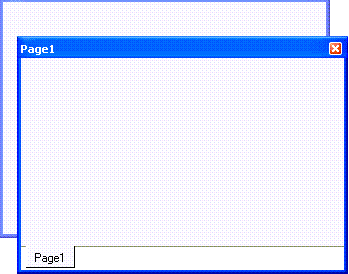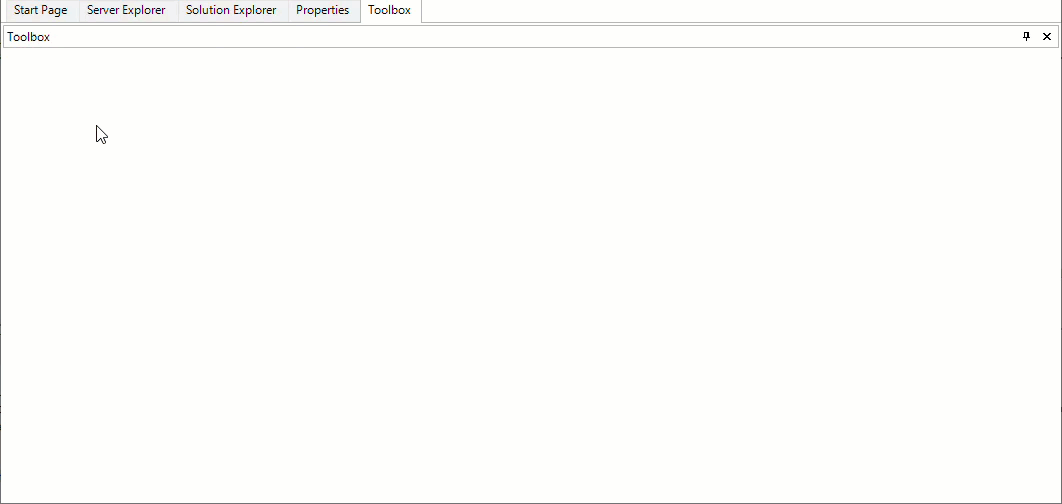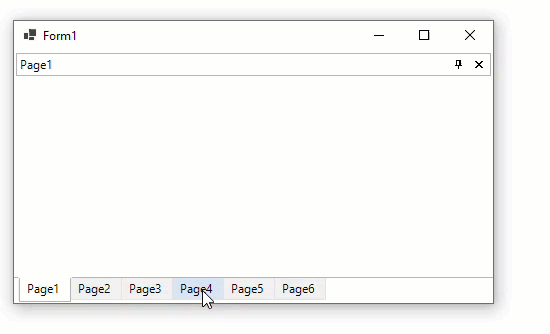- Menus and Toolbars for WinForms Overview
- Key Features
- Overview
- Design-Time Support
- Menus and Toolbars Overview
- DockingTab Overview
- NavBar Overview
- OutBar Overview
- TopicBar Overview
- RadialMenu Overview
- Menus and Toolbars for WinForms Samples
-
Menus and Toolbars for WinForms Task-Based Help
- Menu Tasks
- ToolBar Tasks
- Context Menu Tasks
-
DockingTab Tasks
- Adding a Scrollbar to a DockingTab
- Closing a DockingTabPage
- Determining if the DockingTab is Floating
- Displaying Multiple Tab Rows
- Displaying the Same Set of Controls on each DockingTabPage
- Enabling DockingTab Docking and Floating
- Enabling or Disabling Focus Cues
- Loading and Saving the Layout of the DockingTab
- Moving Tab Pages at Run Time
- Pinning the DockingTab
- Preventing the Tabs from Receiving Focus on Mouse Click
- Restricting the Usage of Specific Tabs
- NavBar Tasks
- OutBar Tasks
- TopicBar Tasks
Enabling DockingTab Docking and Floating
To add a C1DockingTab to your form, complete the following basic operations:
Place the C1CommandDock control onto your form using a drag-and-drop operation.
The C1CommandDock will dock to the left side of the form. Select the drop-down arrow in the C1CommandDock.Dock property and click the top rectangle. This will dock the C1CommandDock control to the top of the form.
Place the C1DockingTab control inside the C1CommandDock control using a drag-and-drop operation. It will appear like this on your form:

Build and run the application. Select Page1 with your mouse and drag it downward. Your docking tab at run time should look like the following docking tab:

Note: You can use the C1CommandDock property FloatHide to control how the C1DockingTabPage behaves at run-time. This property allows you to choose to keep focus on the tab pages when the application loses focus. There are three possible settings for C1CommandDock.FloatHide: Default, Never, or FocusLost.
Set Centre Tab Width
In C1CommandDock, the floating tabpages can be docked using Left, Top, Right, Bottom, and Diamond anchors. When docking the tabpages in the container, existing tabs may become hidden due to the space occupied by the new tab. In such scenarios, C1CommandDock allows you to set a minimum tab size for existing tabs through CentralTabMinimumSize property available in C1CommandDock class. The CentralTabMinimumSize accepts a non-negative value, either as a percentage or an absolute value. The percentage value specifies the minimum space reserved for the existing tabs as a proportion of the parent container, whereas absolute value specifies the space in terms of pixels.
Note: The CentralTabMinimumSize property requires at least two tabpages present in container while a new tab is docked in that area.
The image below illustrates how the CentralTabMinimumSize property preserves space for the existing tabs in C1CommandDock while new tab is being docked.

The below code snippet illustrates setting the CentralTabMinimumSize property with value 150px for central tabs in C1CommandDock.
c1CommandDock1.CentralTabMinimumSize.WidthType = SizeType.Absolute;
c1CommandDock1.CentralTabMinimumSize.Width = 150;Anchors in Floating Tabs
When a tab is detached from the main host window, it becomes an independent host window. This new window functions like the original, allowing additional tabs to be added and supports all docking (anchoring) operations, similar to the original host window.
The below GIF illustrates support of all docking operations in the new host window:

To enable docking operations in the new host window, use the FloatingWindowOptions property of C1DockingManager Class. Follow the below steps to enable all docking operations in floating window:
Add the C1DockingManager from the ToolBox onto the form. Observe that the C1DockingManager component is added to the component tray.
Switch to the code window, use the below code to enable all docking operation in the floating window:
c1DockingManager1.FloatingWindowOptions.AllowedAnchors = C1.Win.Command.AllowedAnchors.All;


